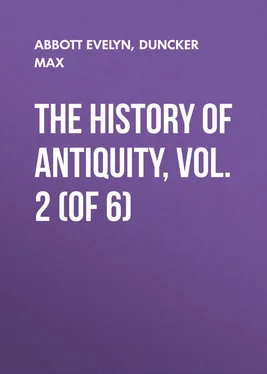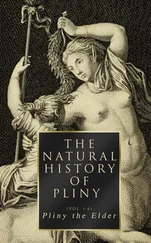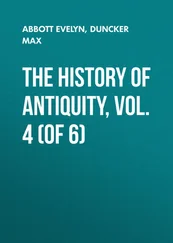Evelyn Abbott - The History of Antiquity, Vol. 2 (of 6)
Здесь есть возможность читать онлайн «Evelyn Abbott - The History of Antiquity, Vol. 2 (of 6)» — ознакомительный отрывок электронной книги совершенно бесплатно, а после прочтения отрывка купить полную версию. В некоторых случаях можно слушать аудио, скачать через торрент в формате fb2 и присутствует краткое содержание. Жанр: foreign_antique, foreign_prose, Историческая проза, на английском языке. Описание произведения, (предисловие) а так же отзывы посетителей доступны на портале библиотеки ЛибКат.
- Название:The History of Antiquity, Vol. 2 (of 6)
- Автор:
- Жанр:
- Год:неизвестен
- ISBN:нет данных
- Рейтинг книги:4 / 5. Голосов: 1
-
Избранное:Добавить в избранное
- Отзывы:
-
Ваша оценка:
- 80
- 1
- 2
- 3
- 4
- 5
The History of Antiquity, Vol. 2 (of 6): краткое содержание, описание и аннотация
Предлагаем к чтению аннотацию, описание, краткое содержание или предисловие (зависит от того, что написал сам автор книги «The History of Antiquity, Vol. 2 (of 6)»). Если вы не нашли необходимую информацию о книге — напишите в комментариях, мы постараемся отыскать её.
The History of Antiquity, Vol. 2 (of 6) — читать онлайн ознакомительный отрывок
Ниже представлен текст книги, разбитый по страницам. Система сохранения места последней прочитанной страницы, позволяет с удобством читать онлайн бесплатно книгу «The History of Antiquity, Vol. 2 (of 6)», без необходимости каждый раз заново искать на чём Вы остановились. Поставьте закладку, и сможете в любой момент перейти на страницу, на которой закончили чтение.
Интервал:
Закладка:
On Sardinia also, as Diodorus tells us, the Phenicians planted many colonies. 159 159 Diod. 5, 35.
The mountains of Sardinia contained iron, silver, and lead. According to the legend of the Greeks, Sardus, the son of Makeris, as the Libyans called Heracles, first came with Libyans to the island. Then Heracles sent his brother's son Iolaus, together with his own sons, whom he had begotten in Attica, to Sardinia. As Heracles had been lord of the whole West, these regions belonged of right to Iolaus and his companions. Iolaus conquered the native inhabitants, took possession of and divided the best and most level portion of the land which was afterwards known by the name of Iolaus; then he sent for Dædalus out of Sicily and erected large buildings, which, Diodorus adds, are still in existence; but in Sicily temples were erected to himself, and honour paid as to a hero, and a famous shrine was erected in Agyrion, "where," as Diodorus remarks of this his native city, "even to this day yearly sacrifices are offered." 160 160 Diod. 4, 24, 29, 30; 5, 15; Arist. "De mirab. ausc." c. 104; Pausan. 10, 17, 2.
Makeris, the supposed father of Sardus, is, like Makar, a form of the name Melkarth. If Sardinia and the whole West as well as Eryx is said to have belonged to Heracles, if Heracles sends out his nearest relations to Sardinia, if the artist Dædalus is his companion here as he was the companion of Minos in Crete and Sicily, it becomes obvious that the temples of Baal Melkarth on the coasts of Sardinia and Sicily lie at the base of these legends of the Greeks, that it was the Phenicians who brought the worship of their god along with their colonies to these coasts, to which they were led by the wealth of the Sardinian mountains in copper. As we already ventured to suppose (I. 368), Iolaus may be an epithet or a special form of Baal. 161 161 Movers ("Phœniz." 1, 536) assumes that Iolaus may be identical with Esmun (I. 377).
The legend of the Greeks makes Heracles, i. e. Baal Melkarth, lord of the whole West. As a fact, the colonies of the Phenicians went beyond Sardinia in this direction. Their first colonies on the north coast of Africa appear to have been planted where the shore runs out nearest Sicily; Hippo was apparently regarded as the oldest colony. 162 162 Sallust, "Jugurtha," 19, 1.
In the legends of the coins mentioned above (p. 53) Hippo is named beside Tyre and Citium as a daughter of Sidon. When a second Hippo was afterwards founded further to the west, opposite the south coast of Sardinia, at the mouth of the Ubus, the old Hippo got the name of "Ippoacheret," and among the Greeks "Hippon Zarytos," i. e. "the other Hippo." 163 163 Movers, loc. cit. s. 144.
Ityke ( atak , settlement, Utica), on the mouth of the Bagradas (Medsherda), takes the next place after this Hippo, if indeed it was not founded before it. Aristotle tells us that the Phenicians stated that Ityke was built 287 years before Carthage, 164 164 "De mirab. ausc." c. 146.
and Pliny maintains that Ityke was founded 1178 years before his time. 165 165 "Hist. nat." 16, 79.
As Carthage was founded in the year 846 B.C. (below, chap. 11), Ityke, according to Aristotle's statement, was built in the year 1133 B.C. With this the statement of Pliny agrees. He wrote in the years 52-77 A.D., and therefore he places the foundation of Ityke in the year 1126 or 1100 B.C.
About the same time, i. e. about the year 1100 B.C., the Phenicians had already reached much further to the west. In his Phenician history, Claudius Iolaus tells us that Archaleus (Arkal, Heracles 166 166 Arkal or Archal may mean "fire of the All," "light of the All."
), the son of Phœnix, built Gadeira (Gades). 167 167 Etym. Magn. Γαδεῖρα.
"From ancient times," such is the account of Diodorus, "the Phenicians carried on an uninterrupted navigation for the sake of trade, and planted many colonies in Africa, and not a few in Europe, in the regions lying to the west. And when their undertakings succeeded according to their desire and they had collected great treasures, they resolved to traverse the sea beyond the pillars of Heracles, which is called Oceanus. First of all, on their passage through these pillars, they founded upon a peninsula of Europe a city which they called Gadeira, and erected works suitable to the place, chiefly a beautiful temple to Heracles, with splendid offerings according to the custom of the Phenicians. And as this temple was honoured at that time, so also in later times down to our own days it was held in great reverence. When the Phenicians, in order to explore the coasts beyond the pillars, took their course along the shore of Libya, they were carried away far into the Oceanus by a strong wind, and after being driven many days by the storm they came to a large island opposite Libya, where the fertility was so great and the climate so beautiful that it seemed by the abundance of blessings found there to be intended for the dwelling of the gods rather than men." 168 168 Diod. 5, 19, 20.
Strabo says, the Gaditani narrated that an oracle bade the Tyrians send a colony to the pillars of Heracles. When those who had been sent reached the straits of Mount Calpe they were of opinion that the promontories which enclosed the passage, Calpe and the opposite headland of Abilyx in Libya, 169 169 On the meaning given in Avienus ("Ora marit") of Abila as "high mountain," and Calpa as "big-bellied jar," cf. Müllenhoff, "Deutsche Alterthumsk," 1, 83.
were the pillars which bounded the earth, and the limit of the travels of Heracles, which the oracle mentioned. So they landed on this side of the straits, at the spot where the city of the Axitani (Sexi) now stands; but since the sacrifices were not favourable there they turned back. Those sent out after them sailed through the straits, and cast anchor at an island sacred to Heracles, 1500 stades beyond the pillars, opposite the city of Onoba in Iberia; but as the sacrifices were again unfavourable they also again turned home. Finally, a third fleet landed on a little island 750 stades beyond Mount Calpe, close to the mainland, and not far from the mouth of the Bætis. Here, on the east side of the island, they built a temple to Heracles; on the opposite side of the island they built the city of Gadeira, and on the extreme western point the temple of Cronos. In the temple of Heracles there were two fountains and "two pillars of brass, eight cubits in height, on which is recorded the cost of the building of this temple." 170 170 Strabo, pp. 169-172. Justin (44, 5) represents the Tyrians as founding Gades in consequence of a dream. In regard to the name cf. Avien. "Ora marit," 267-270.
This foundation of Gades, which on the coins is called Gadir and Agadir, i. e. wall, fortification, the modern Cadiz, and without doubt the most ancient city in Europe which has preserved its name, is said to have taken place in the year 1100 B.C. 171 171 Movers, "Phœniz." 2, 622. Strabo (p. 48) puts the first settlements of the Phenicians in the midst of the Libyan coast and at Gades just after the Trojan war, Velleius (1, 2, 6, in combination with 1, 8, 4), in the year 1100 B.C. Cf. Movers, loc. cit. S. 148, note 90. The Greeks called both land and river Tartessus. The pillars of the Tyrian god "Archaleus," are with them the pillars of their "Heracles," which he sets up as marks of his campaigns. Here, opposite the mouth of the Tartessus, they place the island Erythea, i. e. the red island on which the giant Geryon, i. e. "the roarer," guards the red oxen of the sun: Erythea is one of the islands near Cadiz; Müllenhoff, Deutsche "Alterthumsk: " 1, 134 ff.
If Ityke was founded before 1100 B.C. or about that time, we have no reason to doubt the founding of Gades soon after that date. Hence the ships of the Phenicians would have reached the ocean about the time when Tiglath Pilesar I. left the Tigris with his army, trod the north of Syria, and looked on the Mediterranean.
Интервал:
Закладка:
Похожие книги на «The History of Antiquity, Vol. 2 (of 6)»
Представляем Вашему вниманию похожие книги на «The History of Antiquity, Vol. 2 (of 6)» списком для выбора. Мы отобрали схожую по названию и смыслу литературу в надежде предоставить читателям больше вариантов отыскать новые, интересные, ещё непрочитанные произведения.
Обсуждение, отзывы о книге «The History of Antiquity, Vol. 2 (of 6)» и просто собственные мнения читателей. Оставьте ваши комментарии, напишите, что Вы думаете о произведении, его смысле или главных героях. Укажите что конкретно понравилось, а что нет, и почему Вы так считаете.












